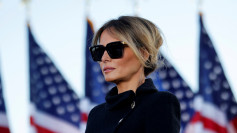The Trump administration is preparing a sweeping expansion of its travel ban policy, targeting citizens from 43 countries across varying levels of restriction, according to a draft proposal under review by the State Department. The move, based on a January executive order signed by President Donald Trump, would represent the most significant application of travel restrictions since his first-term travel bans.
The draft list divides countries into three categories-red, orange, and yellow-each indicating different levels of restrictions, according to officials familiar with the proposal. While the list is not yet finalized, it was developed by State Department officials weeks ago and is undergoing review by security specialists, embassy personnel, and regional bureaus.
The "red" list includes 11 countries whose citizens would be entirely barred from entering the United States. These nations are Afghanistan, Bhutan, Cuba, Iran, Libya, North Korea, Somalia, Sudan, Syria, Venezuela, and Yemen. Under this designation, all forms of travel, including business, tourism, and immigration, would be prohibited.
A second tier, known as the "orange" list, identifies 10 countries whose citizens would face significant restrictions but would not be completely banned. Travelers from these countries-including Belarus, Eritrea, Haiti, Laos, Myanmar, Pakistan, Russia, Sierra Leone, South Sudan, and Turkmenistan-would be required to undergo mandatory in-person visa interviews. Affluent business travelers may be allowed entry, but immigrant and tourist visas would be limited.
The third category, labeled the "yellow" list, encompasses 22 countries that have been given 60 days to address U.S. concerns over security and vetting deficiencies. Failure to comply within the designated time frame could result in these countries being moved to one of the more restrictive categories. Countries on this list include Angola, Antigua and Barbuda, Benin, Burkina Faso, Cambodia, Cameroon, Cape Verde, Chad, Republic of Congo, Democratic Republic of Congo, Dominica, Equatorial Guinea, Gambia, Liberia, Malawi, Mali, Mauritania, St. Kitts and Nevis, St. Lucia, São Tomé and Príncipe, Vanuatu, and Zimbabwe.
In his January 20 executive order, President Trump argued that the restrictions are necessary to "protect its citizens from aliens who intend to commit terrorist attacks, threaten our national security, espouse hateful ideology, or otherwise exploit the immigration laws for malevolent purposes."
The draft list remains under review, and White House officials stressed that no final decision has been made. A White House official told The Independent, "No decision has been made," while acknowledging the draft proposal's existence.
The State Department also issued a statement reaffirming its commitment to "upholding the highest standards of national security and public safety through our visa process," noting that it is following the president's directive.
This proposal would represent a significant revival and expansion of the travel bans first introduced by the Trump administration in 2017, which were rescinded by President Joe Biden upon taking office in 2021. Biden called those bans "a stain on our national conscience and [were] inconsistent with our long history of welcoming people of all faiths and no faith at all."
Some of the concerns cited in the draft memo involve deficiencies such as:
- Inadequate sharing of information on incoming travelers with U.S. authorities.
- Security lapses in passport issuance.
- Allegations of some countries selling citizenship to individuals from banned nations.
Security officials and diplomats are currently reviewing whether the draft accurately reflects each country's cooperation and security capabilities. Policy considerations, including diplomatic relations and broader strategic interests, are also under discussion as potential reasons to adjust categorizations.






